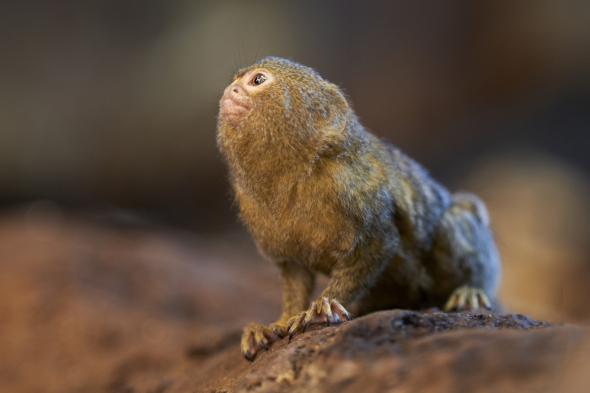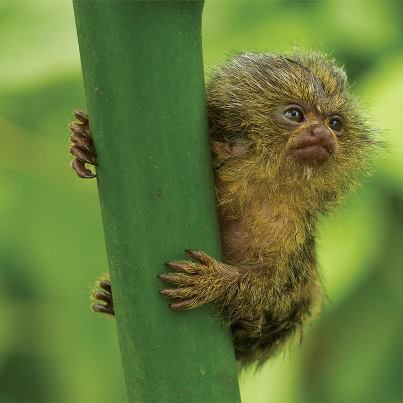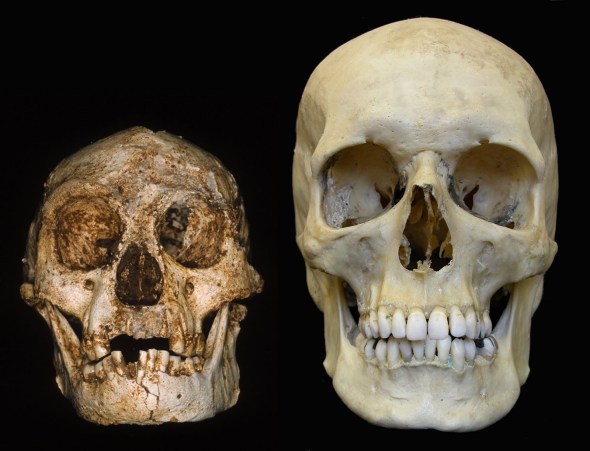Environmentalism Chapter 29 - Flores Hobbit Evolution (Evil Go-Go)

Could the worlds tiniest monkey help unravel the mysterious origins of Homo floresiensis the Hobbit human relative? Emergence of The Hobbits skull is similar to that of a taller hominin, Homo erectus. This suggests to some that the Homo floresiensis, whose remains were found on an Indonesian island ten years ago, was a dwarf species that evolved from this larger one.
However its brain and teeth are proportionally much smaller than in typical dwarf species which others say indicates the Hobbit is merely and unusual form of our species. But perhaps the Hobbit was not a typical dwarf.
Scientist’s that observed Pygmy Marmosets Callithrix pygmaea, quoted they too have previously been put forward as a dwarf species but, again have unusually small teeth. This pinpointed against dwarfism of which scientists are using a primate evolutionary tree, scientists have confirmed that these monkeys did evolve from larger ancestors and undergo dwarfism.
So why do they have such small teeth?
The evolution of such a small species usually involves shortening the length of pregnancy or infancy, but recently it has been suggested that there might be a more unusual route: pregnancy length stays the same but the growth of the fetes slows down. This might influence brain and tooth size as they develop early.
Scientists found that the Pygmy Marmoset’s pregnancy and infancy are similar in length to their evolutionarily close, larger relations.
This suggests the unconventional route to small stature (Journal of Biology 2000).
If Homo floresiensis is a dwarf, one of the controversies has been whether it fits with previous patterns of dwarfism. The new analysis suggests it may fit with what is seen in Pygmy marmosets. Some scientists are not convinced though stating that its adamant that the Hobbit is simply a diseased member of our species however other critics state the analysis makes a strong case that primate can undergo dwarfism.
Dwarfism;
The first set of remains to have been found, LB1, was chosen as the type specimen for the proposed species. LB1 is a fairly complete skeleton, including a nearly complete cranium (skull), determined to be that of a 30-year-old female. LB1 has been nicknamed the Little Lady of Flores or “Flo”.

LB1’s height has been estimated at about 1.06 m (3 ft. 6 in). The height of a second skeleton, LB8, has been estimated at 1.09 m (3 ft. 7 in) based on measurements of its tibia. These estimates are outside the range of normal modern human height and considerably shorter than the average adult height of even the smallest modern humans, such as the Mbenga and Mbuti (< 1.5 m (4 ft. 11 in) Twa, Semang (1.37 m (4 ft. 6 in) for adult women) of the Malay Peninsula, or the Andamanese (1.37 m (4 ft. 6 in) for adult women).
By body mass, differences between modern Pygmies and Homo floresiensis are even greater. LB1’s body mass has been estimated at 25 kg (55 lb.). This is smaller than that of not only modern H. sapiens, but also H. erectus, which Brown and colleagues have suggested is the immediate ancestor of H. floresiensis. LB1 and LB8 are also somewhat smaller than the australopithecines from three million years ago, not previously thought to have expanded beyond Africa. Thus, LB1 and LB8 may be the shortest and smallest members of the extended human family discovered thus far.
Could the Scientists be correct, could the “cause for debate” simply be a diseased relative?
Laron syndrome;
Laron syndrome is a disorder chiefly characterized by marked short stature. Signs and symptoms in the newborn period typically include low blood sugar (hypoglycemia) and having an unusually small penis (micropenis). Affected children have slow and disproportionate growth, delayed motor development due to decreased muscle mass, and delayed puberty. Other signs and symptoms include distinctive facial features (protruding and high forehead, shallow eye sockets, underdeveloped nasal bridge and small chin); delayed teething; a high-pitched voice; thin bones and skin; and decreased sweating (hypohidrosis). It is often caused by mutations in the GHR gene and is inherited in an autosomal recessive manner. Treatment focuses on improving growth and includes injections of insulin-like growth factor 1 (IGF-1) and a diet with adequate calories.[
Pygmy Marmoset;
The pygmy marmoset is 4 1/2 to 6 inches long with a 7 to 9 inch tail. It weighs 3 5/8 to 4 ounces. It is the smallest monkey in the world. The fur on its hair is long, forming a cape or hood. Its color is tawny and speckled. It has barely visible rings of black and tawny on its tail. Its fingers and toes have claws.
The pygmy marmoset lives in groups and pairs. Groups contain one breeding pair and 3 to 7 offspring. The older offspring help to take care of the youngest or new offspring of the pair after the first few weeks. The first few weeks the father takes care of the young except during nursing.
There is no apparent breeding season for the pygmy marmoset and it most likely breeds twice per year. The gestation or pregnancy lasts 130 to 150 days. Twins are most common. Single births are rare. The young suckles for 3 months before it is weaned. Both males and females become sexually mature between 1 and 1 1/2 years old. The lifespan of the pygmy marmoset may reach up to 12 years which is long in relation to the animal’s size.

They pygmy marmoset, like most marmosets, eats the gum of trees as its main source of food. However, unlike most marmosets that search for new sources each day the pygmy marmoset gouges about 10 holes in the bark each day, scent marks the tree and then returns later to scrape up the liquid oozing out of the tree with its teeth. It also eats nectar, fruits and small creatures like grubs and spiders. The pygmy marmoset is located in South America. It is arboreal so requires trees to spend its life in so occupies tropical and floodplain forest habitats.
The pygmy marmoset is classified least concern on the IUCN (International Union of Conservation of Nature and Natural Resources) red list of threatened species. This classification is the lowest and means the species has a large widespread, population and no current threats that would likely decrease its population in the foreseeable future.
International Animal Rescue Foundation Forestry Conservation & Speciesism Watch
Director
www.international-animalrescue-foundation.org.uk



